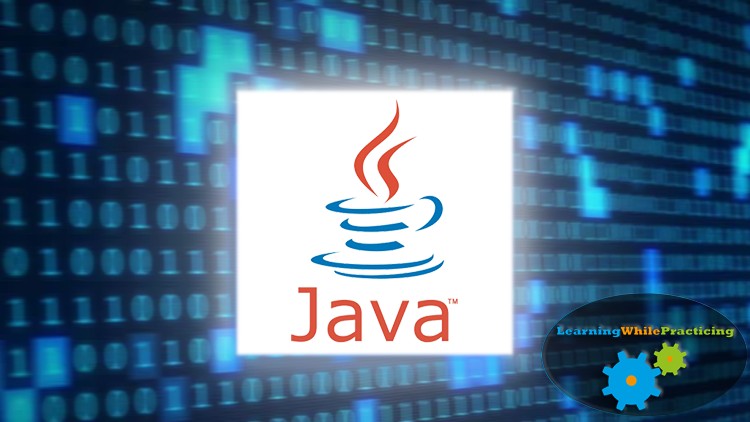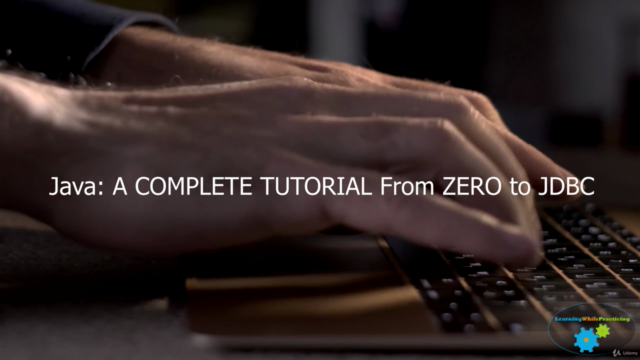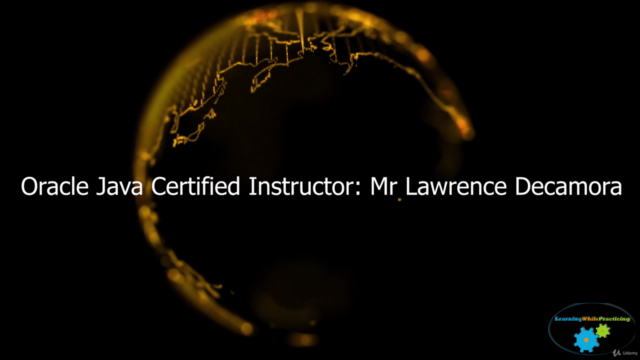Java: a COMPLETE tutorial from ZERO to JDBC

Why take this course?
¡Hola! It looks like you've outlined a comprehensive curriculum for a Java programming course. This curriculum covers a wide range of topics from the basics to more advanced concepts, including object-oriented principles, data types, control flow statements, constructors, the Object class methods (equals(), hashCode(), and toString()), static keywords, mathematical operations, wrapper classes, exceptions, assertions, file I/O, collections with generics, GUI application development using AWT/Swing, and an introduction to JDBC for database connectivity.
Here are some insights on a few of the topics you've listed:
-
Overloading Constructors: This allows you to create multiple constructors with different parameter lists, enabling you to initialize objects in various ways. It's a fundamental OOP concept that provides flexibility when creating new instances of a class.
-
The
Objectclass methods (equals(),hashCode(), andtoString()): These methods are crucial for object comparison, hashing, and representation as strings, respectively. Overriding these methods allows you to define the behavior specific to your custom classes. -
The static keyword: This keyword is used to call a class method without creating an instance of the class. It belongs to the class itself rather than its objects. For example,
Math.sqrt(4)is a static method call from theMathclass. -
The Math and System Classes: These classes provide a set of pre-coded methods to perform mathematical operations or system-related functions without having to write the underlying code yourself.
-
Static imports: This feature allows you to import static members (methods or fields) directly into your code, which can lead to cleaner and more concise code when using static utilities like those found in the
Mathclass. -
Wrapper Classes: These classes (like
Integer,Double, etc.) provide a bridge between the primitive data types and their corresponding objects, allowing you to use the object-oriented features with these types. -
The final keyword: This keyword can be used with fields or methods to ensure they cannot be modified after they have been assigned a value or implemented.
-
The enum keyword: Enums are a special data type that enables for a variable to be defined as one of a specific, known set of values. They promote readability and maintainability by replacing magic numbers with named, manageable constants.
-
The abstract keyword: This keyword is used to declare an abstract class or method. Abstract classes cannot be instantiated directly but are intended to provide common base functionality for subclasses. Abstract methods are declared without a body, leaving it to the subclass to implement them.
-
Java Interfaces: An interface is a reference type that can contain constants, method signatures, default methods, static methods, and nested types. Default methods allow developers to add new methods to existing interfaces without breaking the code of implementing classes.
-
Functional Interface and Lambda Expression: A functional interface contains exactly one abstract method (or multiple methods with at least one abstract and the others defaulted). Lambdas provide a way to pass behavior as an argument to a method, allowing for more concise and readable code when implementing functional interfaces.
-
Exceptions and Assertions: Exceptions are runtime errors that can be caught and handled gracefully, providing a mechanism for error handling in Java programs. Assertions are used during development to catch logical issues early in the software lifecycle.
-
JDBC: Java Database Connectivity (JDBC) is an API for establishing a database connection, executing SQL operations, and handling data transfer between Java and a database. It's essential for any application that requires interaction with a database.
Each of these topics is broad and can be deep-dived into further, so it's great that your course covers a wide range of subjects to provide a well-rounded understanding of Java programming. Happy teaching or learning!
Course Gallery




Loading charts...